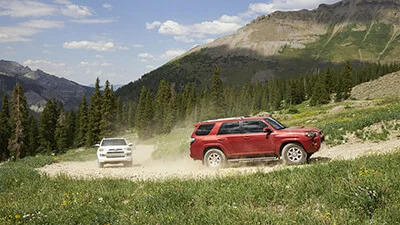Toyota introduced its first version of the 4Runner in 1984. The manufacturer certainly thought it had built an SUV that would appeal to drivers throughout North America. The company’s designers, however, couldn’t have possibly imagined that they had created a vehicle that people would still love 30 years later.
The 4Runner has undergone plenty of changes since its first generation. Once you understand the vehicle’s history, you’ll have an even deeper appreciation for its most recent incarnation.
First Generation 4Runner (1984-1989)
The first generation 4Runner was intended to give drivers a way to explore off-road environments. The earliest version featured a four-cylinder engine and plentiful cargo room for camping equipment. Over the next several years, Toyota updated the SUV’s suspension, engine, and interior giving it a smoother ride and more luxurious interior features.
Second Generation 4Runner (1989-1995)
The second generation continued these improvements. Toyota also added more diversity to the 4Runner’s lineup. Starting in 1990, buyers could choose between two-door and four-door models. They could also opt for a two-wheel-drive version if they didn’t want four-wheel-drive.
Third Generation 4Runner (1995-2002)
Toyota completely redesigned the third generation 4Runner. Buyers could now choose between a 2.7-liter four-cylinder engine that created 150 horsepower and 177 pound-feet of torque, and a 3.4-liter V6 that offered 183 horsepower and 217 pound-feet of torque.
The design overhaul also gave the 4Runner a plush interior, especially with upper trim levels. The increased power and consumer options, however, make it stand out from previous versions.
Fourth Generation 4Runner (2002-2009)
After seven years of production, Toyota decided to build a new model of the 4Runner. The company increased the 4Runner’s wheelbase and length to give it more stability on and off the road.
Toyota dropped the four-cylinder engine and created new V6 and V8 engines. The updated V6 generated 245 horsepower and 282 pound-feet of torque. The V8 offered slightly less horsepower at 235 hp, but its 320 pound-feet of torque made it a monster on trails.
Fifth Generation 4Runner (2009-present)
Not surprisingly, the 4Runner’s latest generation is superior to earlier models. The 2016 model comes loaded with impressive standard features like:
- Rearview camera
- Heated exterior mirrors
- Rear privacy glass
- LED taillights
- Keyless entry
Toyota has dropped the V8 engine, but the V6 is stronger than ever. The 4.0-liter generates 270 horsepower and 278 pound-feet of torque, which is more than enough for exploring trails.
The 4Runner now comes in more trim levels than ever. The base SR5 has trail-worthy features, but the Trail, TRD Pro, and Limited models pile on premium features and technology. While some of the features are purely cosmetic, others have a remarkable impact on performance. The Trail model, for instance, has a Dynamic Suspension System that automatically adjusts to rough, uneven terrain.
The 4Runner has a long history of helping people explore the outdoors. With the advances included in the latest model, you have more reasons than before to leave the pavement behind for an off-road adventure.






